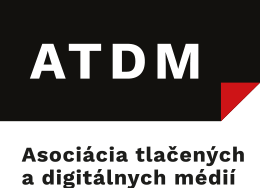The 11th edition of WAN-IFRA’s Digital Media India (DMI) conference, held virtually from 8 to 10 March, hosted more than 340 news media executives from over 60 organisations in attendance.
Digital Media India 2022 hopes to build on the conversation around an array of contemporary business, editorial and digital business topics. Themed ‘Digital revenue and technology,’ the conference boasts a concise, carefully-tailored, content-rich programme to help connect the right people.
The three-day conference kicked off with a keynote address by Warren Fernandez (Editor-in-Chief, The Straits Times & English/Malay/Tamil Media Group, SPH Media Trust, Singapore), who gave us a glimpse into the media predictions for 2022. He shared how scenario thinking at Singapore Press Holdings helped them deal with the uncertainties that lie ahead and the journey of transformation they have been going through over the last couple of years. He said, “SPH is focussed on investing in their people, product and purpose (engagement)”. He added that it is helping them build better products, better user experience, and go beyond just news to analyse and insights that users are willing to engage with trust.
Day 1 of the conference featured sessions on digital transformation, the crucial role of technology in the news, how South Asian publishers have adopted subscriptions as a viable revenue stream and how newsrooms are battling the after-effects of the COVID-19 pandemic.
Jacqui Park (Head of network strategy and innovation, IPI Global Network of editors and journalists) talked about how the pandemic has expedited the transition to a more sustainable media space in Australia and New Zealand. A great learning for South Asian media, she brought attention to how business models have become even more profitable in these two years of the pandemic and shifted to reader revenue as a reliable cash flow source.
Marcus Duack (Head Publishing Technologies & Solution, Ringier AG, Switzerland) spoke on the strategic role of IT in the digital transformation of publishers. “With 110 subsidiary products, we have to be scalable, flexible & experiment a lot with tech. We do not need 110 different solutions but achieve an environment where all these companies work together efficiently.” “Build tech that is unique to you, use tech where you need flexibility, and buy tech which enables you to do the basics,” he said.”
Day 1 closed with a panel discussion among Mukund Padmanabhan (Chairman, World Editors Forum India), Ritu Kapur (Co-Founder, The Quint, India), and Srinivasan Balasubramanian (Managing Director, Vikatan Group) on the status of the Indian journalism industry monetising reader revenue as a major revenue source.
Kapur pointed out that the problem with publishers being advertising revenue dependent was that it put currency of traffic over the quality of journalism. “The key step in building your subscription journey is to start thinking audience-first. Conversions are less likely to happen from the news or deep-dive investigations. Build your non-news buckets to hook users in who will then start engaging with your core content,” she said.
According to Balasubramanian, the Indian subscription pricing scenario is a different ball game than the West. “The quantum of an annual subscription package is not overwhelming, rendering monthly packages redundant,” he said.
Day 2 of the conference saw sessions on product thinking, the impact of video in increasing engagement and takeaways from the Reuters Digital News Report for the South Asian media industry by Rasmus Nielsen (Director, Reuters Institute for the Study of Journalism, UK).
South Asian Digital Media Awards 2021
The day closed with the presentation of the South Asian Digital Media Awards 2021. From new approaches to digital subscriptions to impactful native advertising campaigns, these are projects that inspire us all.
This edition of the South Asian Digital Media Awards 2021, which recognises and lauds publishers in South Asia, recorded 140 entries, a record jump of close to double the number of entries compared to the previous year.
Malayala Manorama’s manoramaonline.com bagged the ‘Best in News Website’ South Asian Digital Media Award for the third time in a row. The other winners were The Hindu, Hindustan Times, The Quint, Mojo Story, NDTV Convergence, Times of India Digital and Sakal.
The Hindu Group and HT Media Ltd. were awarded the SDMA 2021 Champion Publishers of the year with two golds, one silver and two bronze each.
The third and final day of the Digital Media India Conference 2022 will concentrate heavily on reader revenue and data-driven customer journeys.
It will also see five leading publishers, from the Digital News Innovating Programme – Subscription Bootcamp, offered by WAN-IFRA and supported by Meta Journalism Project India, share their subscription journeys.
The complete details of the programme are available at https://wan-ifra.org/events/dmi2022/?pagetype=programme. More information from the conference can be found on Twitter with the hashtag #DMI2022. For a calendar of upcoming WAN-IFRA events, please visit events.wan-ifra.org.
The conference is sponsored by Google News Initiative, piano, Stibo DX and evolok. It is supported by All About Newspapers, gxpress.net, Indian Printer and Publisher, and RIND Survey.
Contact and Inquiries
Magdoom Mohamed, Managing Director, WAN-IFRA South Asia, Chennai, India magdoom.mohamed@wan-ifra.org
Suresh Babu, Asst. Manager – Business Development, WAN-IFRA South Asia, Chennai, India sureshbabu.kr@wan-ifra.org
The post Digital Media India 2022: Technology and audience focus crucial for digital transformation appeared first on WAN-IFRA.
